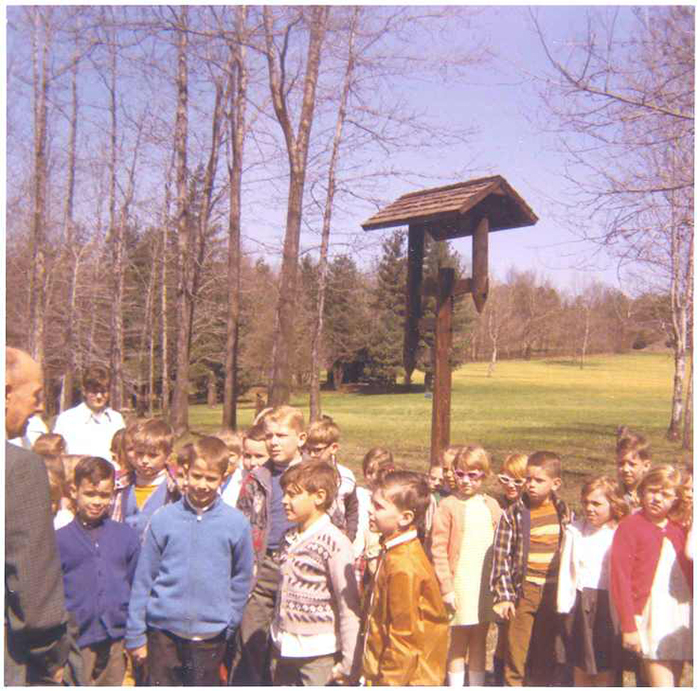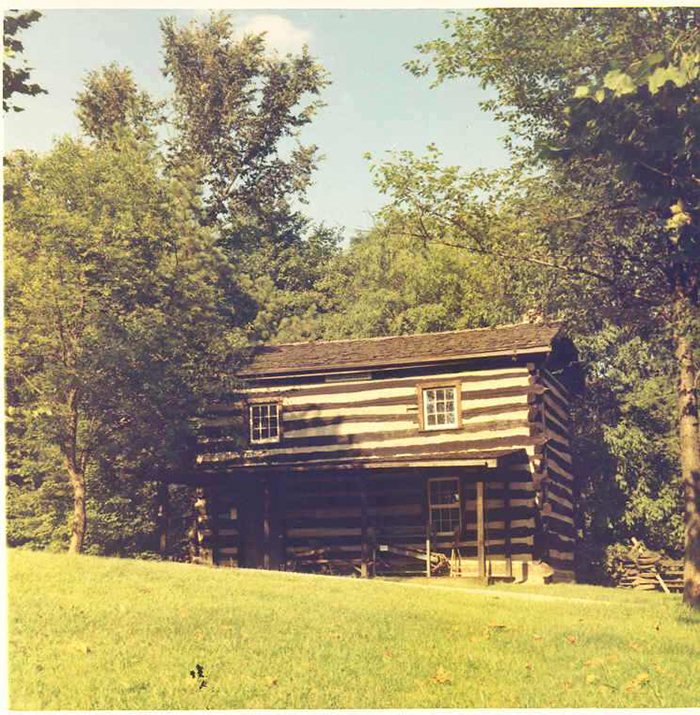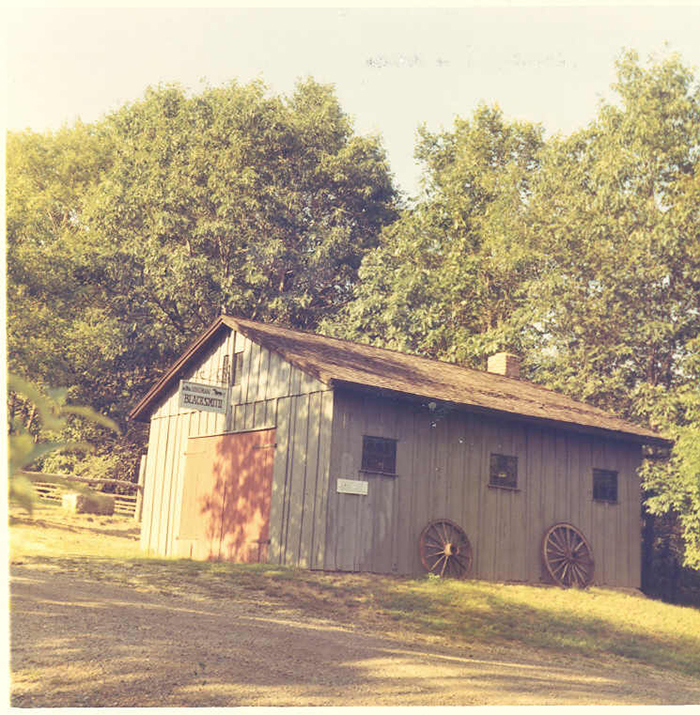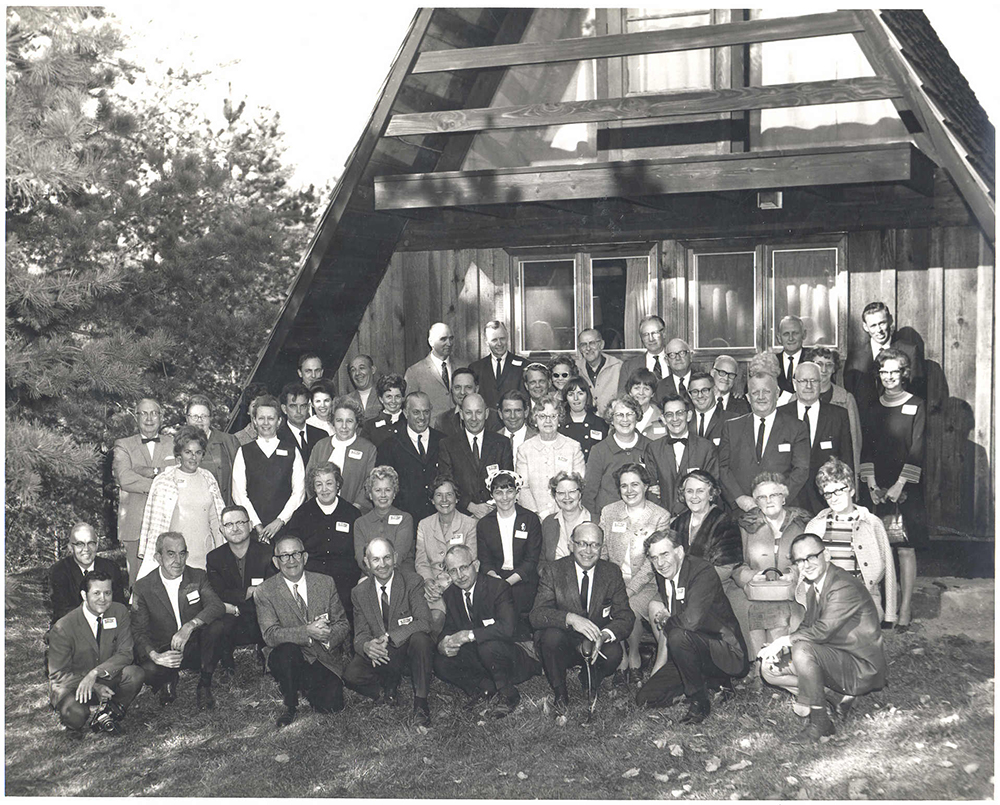This is part two in a series about the making of Meadowcroft. Read part one and part three.
“I have just reflected on some of the highlights of the 82 years I have lived and some of the work I have been able to accomplish at Meadowcroft. Now my time is short, but the enthusiasm and curiosity that I felt as a boy has never ceased. While I have spent a great deal of time and study on the past, I am fascinated by the challenges and wonders of the world and space today and tomorrow. Curiosity and enthusiasm for learning is a way of life. I recommend it to all of you.”
– Albert Miller 1993
As Meadowcroft Rockshelter and Historic Village begins its 50th season, it’s time to reflect on the enormous effort it took to create this enduring Washington County, Pa. tourist destination. The process of turning Meadowcroft from a recreational camp into a museum is well documented in a collection of work journals founder Albert Miller kept as the Millers, farm staff, volunteers, and contractors gradually built a memorial to their Cross Creek ancestors.
The drive to create a museum started in December of 1956 when Frank Flunk of the New York Times visited Albert’s Bancroft farm and Delvin’s Meadowlands farm. After touring the brothers’ farms, he proposed that the two brothers create a museum to display their personal collections. As Albert recalled in 1976, Mr. Flunk even suggested they use the Miller Log House as the museum, and thus began Albert’s drive to create a memorial to his ancestors and their disappearing way of life. The dream that began in 1956 had to wait another five years as Albert and Delvin developed Camp Meadowcroft.
Albert saw an opportunity to add a touch of history to his camp when he heard that a covered bridge in Greene County was going to be replaced in 1961. On Feb. 12 of that year, Albert and others went to look at the Pine Bank Covered Bridge to discuss the possibility of using it to span the gulley beside their camp. In September the bridge was dismantled, and its pieces were brought to Meadowcroft for reconstruction.
The following summer of ‘62 was bustling with activity as the final shingles went onto the bridge and site locations were chosen and leveled for the Miller log house, blacksmith shop, and Miller School. Construction of the village progressed slowly as the resources were available. Reconstruction of the Miller log house began in November 1963 but wasn’t finished until November of ’64 when the Millers were able to procure enough material to frame and shingle the roofs of both the log house and Miller School. The rest of the decade was spent adding more historic structures, and the modern fixtures that the institution would need for public use: electricity, restrooms, a ticket office, picnic pavilions, and more.
As the community heard of the Miller brothers’ efforts, locals began offering Meadowcroft their family heirlooms, histories, and even buildings to bolster the Meadowcroft artifact and archival collections. Historian and close friend of Albert, A.D. White, donated collections applicable to the Meadowcroft mission, such as the records from the Miller School he had collected as the superintendent of schools for northwestern Washington County.
The brothers created the Meadowcroft Foundation in 1968 to operate the museum with Delvin as president and Albert as vice president and treasurer. The nonprofit’s articles of incorporation were filed on Nov. 25, 1968 and were approved by the Court on Dec. 3. Meadowcroft Village opened its doors to the public for the first time on May 30, 1969, but the Meadowcroft Rockshelter lay unexcavated for another four years.

Andrew Donovan is the education and program manager at Meadowcroft Rockshelter and Historic Village.



